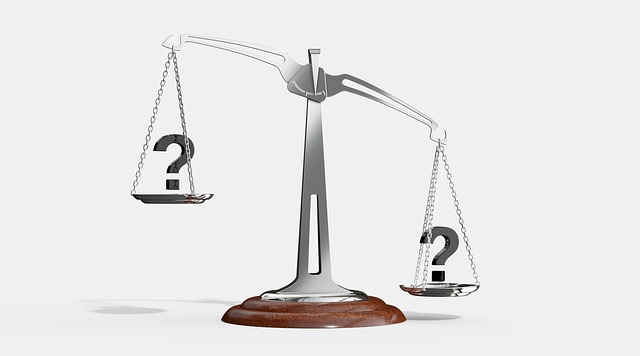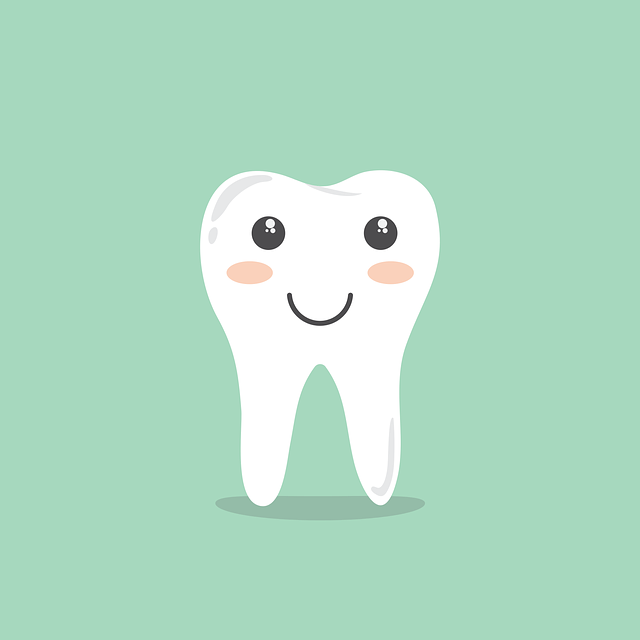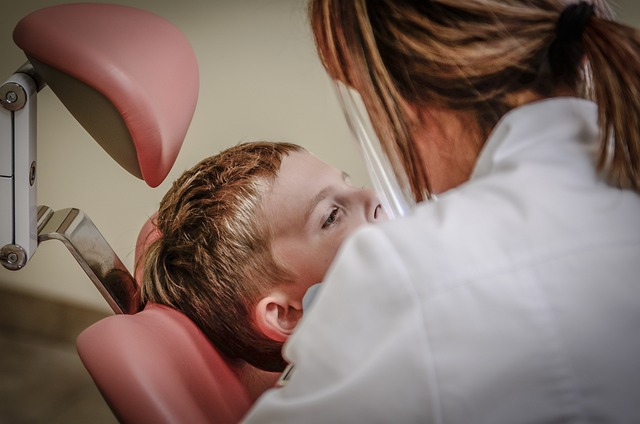Aligning Your Smile: Invisalign for Receding Gums – All You Need to Know!
Welcome to our informative article, where we delve into the wonderful world of Invisalign and its potential benefits for those with receding gums. If you’ve been wondering how to achieve that perfectly aligned smile while addressing gum recession concerns, you’ve come to the right place. In this article, we will guide you through everything you need to know about Invisalign and how it can help restore your smile to its utmost radiance. Don’t worry, we’ve taken a friendly approach to ensure you feel at ease as we explore this fascinating topic together. So, let’s get started and discover the transformative power of Invisalign for receding gums!
1. Understanding the Impact of Receding Gums on Your Smile
Receding gums can significantly affect the appearance of your smile and overall dental health. It occurs when the gum tissue pulls back, exposing the roots of your teeth. If left untreated, receding gums can lead to tooth decay, sensitivity, and even tooth loss. Understanding the impact of receding gums is essential for maintaining optimum oral health.
Here are a few effects that receding gums can have on your smile:
- Uneven Gum Line: Receding gums can cause your gum line to become uneven and unbalanced, affecting the aesthetic appeal of your smile.
- Exposed Tooth Roots: The recession of the gum tissue exposes the roots of your teeth, making them prone to sensitivity and decay.
- Longer Teeth: Gradual gum recession can make your teeth appear longer than usual, giving an aged look to your smile.
To prevent and treat receding gums, it’s important to maintain good oral hygiene practices, such as regular brushing and flossing. Additionally, visiting your dentist for routine check-ups and professional cleanings can help detect and address gum recession early on. By proactively managing receding gums, you can preserve the beauty of your smile and promote long-term oral health.

2. The Importance of Aligning Your Smile Despite Receding Gums
Receding gums can be a common dental issue that many people face. While it may seem like a purely cosmetic concern, the importance of aligning your smile goes beyond just appearances. Let’s take a closer look at why addressing receding gums and aligning your smile is crucial for your oral health.
1. Prevents further gum recession: When your teeth are misaligned, it can put uneven pressure on your gums, leading to gum recession. By aligning your smile, you can distribute the force evenly, helping to prevent further gum recession and maintain healthy gum tissue.
2. Reduces risk of tooth decay and sensitivity: Misaligned teeth can create tight spaces and overcrowding, making it difficult to clean between teeth and effectively remove plaque. This buildup of plaque can lead to tooth decay and increased sensitivity. By aligning your smile, you can improve your oral hygiene routine, ensuring better oral health and decreased risk of dental problems.

3. Introducing Invisalign: A Non-Invasive Solution for Receding Gums
Do you suffer from receding gums? Worried about invasive procedures and painful treatments? Look no further – Invisalign is here to save the day! This groundbreaking technology offers a non-invasive and comfortable solution for receding gums, allowing you to regain your smile with confidence.
Unlike traditional treatments, Invisalign works by using a series of virtually invisible aligners that are custom-made for your mouth. These aligners are made from a smooth and comfortable material, ensuring a pain-free experience throughout your treatment. With Invisalign, you can say goodbye to unsightly metal wires and brackets, as well as the discomfort they bring.
- Convenience: With Invisalign, you can easily remove the aligners whenever you need to eat, drink, or brush your teeth. No more restrictions on your favorite foods!
- Subtle Appearance: Thanks to its clear design, Invisalign aligners are virtually invisible, making them the perfect choice for those who want to maintain a natural look.
- Comfort: The smooth material of Invisalign aligners ensures a comfortable fit, without any sharp edges or irritations to your gums or cheeks.
- Predictable Results: Through advanced 3D imaging technology, you can see a virtual representation of your treatment plan, giving you a clear understanding of the expected results.
Discover a stress-free way to address receding gums and achieve the smile you deserve. Join the millions of satisfied patients who have transformed their smiles with Invisalign – the non-invasive solution for receding gums. Book your consultation today and take the first step towards a healthier, more confident you!

4. How Invisalign Works to Straighten Teeth with Receding Gums
When it comes to straightening teeth with receding gums, Invisalign is a fantastic option that offers both effectiveness and discretion. This innovative treatment uses a series of custom-made, clear aligners to gently shift your teeth into the desired position.
Receding gums can pose a challenge for traditional metal braces, as the brackets can worsen gum recession or cause discomfort. Invisalign eliminates this concern by utilizing smooth and comfortable aligners that won’t aggravate your gums. These aligners are virtually invisible, allowing you to straighten your teeth without drawing unnecessary attention to your smile. As an added bonus, the aligners are removable, making it easier to maintain good oral hygiene and enjoy your favorite foods during treatment.

5. The Benefits of Invisalign for Individuals with Receding Gums
Invisalign is a modern orthodontic treatment that offers numerous benefits for individuals with receding gums. Unlike traditional braces, Invisalign uses clear aligners made of smooth, comfortable plastic material. These aligners are custom-made to fit snugly over your teeth, gradually shifting them into their proper positions.
One of the key advantages of Invisalign for individuals with receding gums is its gentle approach. The aligners exert a gentle and uniform pressure on your teeth, which minimizes the risk of aggravating gum recession or causing discomfort. In addition, with Invisalign, there are no brackets or wires to irritate your gums, reducing the chances of further gum recession or inflammation. This makes it an excellent option for those seeking a more comfortable and friendly treatment experience.
- With Invisalign, you can easily maintain good oral hygiene by simply removing the aligners before brushing and flossing. This feature is particularly beneficial for individuals with receding gums, as keeping your teeth and gums clean is crucial for preventing further gum recession.
- The clear aligners are virtually invisible when worn, making it an ideal choice for those who want to improve their smile discreetly. You can confidently go about your daily activities without worrying about the appearance of braces.
- Invisalign aligners are also removable, allowing you to enjoy your favorite foods without restrictions. Whether it’s biting into a crunchy apple or savoring a sticky treat, you can simply take out the aligners and indulge in your favorite snacks without the fear of damaging your braces.
Overall, Invisalign offers individuals with receding gums a convenient and comfortable orthodontic treatment option. Its gentle approach, ease of use, and discreet nature make it an appealing choice for those seeking to correct their teeth alignment while simultaneously taking care of their gum health.
6. Is Invisalign Suitable for Your Receding Gums? Find Out Here!
Receding gums can be a concern for many people, and it’s important to consider the impact it may have on orthodontic treatments like Invisalign. While Invisalign is a popular choice for teeth straightening, it’s essential to understand if it’s suitable for individuals with receding gums.
One of the key advantages of Invisalign is its ability to accommodate various dental conditions, including receding gums. Here are a few factors to consider when determining if Invisalign is suitable for you:
- Gum health: It’s crucial to have healthy gums before undergoing Invisalign treatment. If you have gum disease or any other gum-related issues, it’s essential to consult with your dentist or orthodontist to address and resolve these concerns before starting Invisalign.
- Tooth stability: Receding gums can lead to tooth sensitivity and mobility. Invisalign treatment may not be suitable if your teeth are significantly loose. Your orthodontist will evaluate the stability of your teeth and recommend the best treatment options accordingly.
- Proper oral hygiene: Maintaining good oral hygiene is vital during Invisalign treatment, especially if you have receding gums. Regular brushing, flossing, and using mouthwash are necessary to keep your gums healthy and prevent any further gum recession.
Remember, every individual’s dental condition is unique, and it’s essential to consult with a qualified orthodontist who can evaluate your specific situation and guide you towards the most suitable treatment options. With their expertise, they can help determine if Invisalign is the right choice for you, even if you have receding gums. So don’t hesitate to schedule a consultation and find out how you can achieve the smile you desire!
7. Exploring the Orthodontic Treatment Plan with Invisalign and Receding Gums
When it comes to orthodontic treatment, many people worry about the impact it may have on their gum health, especially if they have receding gums. However, with the advancements in orthodontics, treatments like Invisalign have been designed to address these concerns while still providing a straighter smile.
How does Invisalign work for people with receding gums?
- Invisalign aligners are made of a smooth, comfortable plastic material that minimizes irritation to the gums.
- Unlike traditional braces, Invisalign aligners are removable, allowing for easier cleaning and maintenance of oral hygiene, which is essential for individuals with receding gums.
- Since Invisalign aligners are virtually invisible, they provide a discreet option for people who may feel self-conscious about their gum health.
- The treatment plan with Invisalign is customized to each person’s specific needs, taking into consideration their gum condition, so as not to exacerbate any existing issues.
Benefits of Invisalign for patients with receding gums:
- Improvement in overall gum health as the aligners gently and gradually move the teeth into their correct positions, reducing the strain on the surrounding gum tissue.
- Reduced risk of gum recession compared to traditional braces, as Invisalign aligners do not apply as much force onto the gums.
- Enhanced oral hygiene maintenance due to the ability to remove the aligners for brushing and flossing, preventing the buildup of plaque and reducing the risk of gum disease.
Overall, Invisalign is a feasible orthodontic treatment option for individuals with receding gums. However, it is crucial to consult with a qualified orthodontist who can assess your specific case and recommend the most appropriate course of action for achieving a straighter smile without compromising your gum health.
8. What to Expect During Your Invisalign Treatment for Receding Gums
During your Invisalign treatment for receding gums, it is important to have a clear understanding of what to expect. Below are some key points to help you through your journey:
- Regular check-ups: Throughout your treatment, you will have regular check-up appointments with your orthodontist to monitor your progress and make any necessary adjustments to your aligners.
- Gentle pressure: Invisalign aligners exert gentle pressure on your teeth to gradually shift them into their desired position. The pressure may cause mild discomfort initially, but it should subside as your mouth adjusts.
- Oral hygiene: Maintaining good oral hygiene is crucial during your Invisalign treatment for receding gums. Make sure to brush your teeth thoroughly after meals and before wearing your aligners. Flossing and using mouthwash can also help maintain a healthy oral environment.
Additionally, it is essential to remember that everyone’s treatment timeline may vary. The duration of your treatment will depend on the severity of your receding gums and your individual dental needs. Adhering to your orthodontist’s instructions and wearing your aligners for the recommended amount of time each day will help ensure successful treatment and the best possible outcome for your receding gums.
9. Tips and Tricks for Caring for Your Aligners with Receding Gums
Here are some helpful tips and tricks to care for your aligners if you have receding gums:
1. Take it slow: If you have receding gums, it’s important to proceed with caution when it comes to your aligner treatment. Take your time with each step and gently insert or remove your aligners to avoid any discomfort or damage to your gums.
2. Maintain good oral hygiene: Keeping your mouth clean and free from bacteria is crucial for both your gums and your aligners. Brush and floss your teeth thoroughly after meals and before putting your aligners back in. Make sure to clean your aligners regularly using a soft toothbrush or aligner cleaning solution.
10. Achieving a Confident Smile with Invisalign for Receding Gums
Receding gums can not only affect the appearance of your smile but also lead to heightened sensitivity and potential tooth loss. If you’re seeking a solution to improve your smile and oral health, Invisalign may be the answer you’ve been looking for. Invisalign clear aligners can effectively treat receding gums and help you achieve a confident, straight smile without the need for traditional metal braces.
Here’s how Invisalign can benefit patients with receding gums:
- Gentle treatment: Invisalign utilizes a series of custom-made, smooth plastic aligners that apply gentle pressure to shift the teeth gradually. This minimizes discomfort and prevents further damage to the gums.
- Improved gum health: As your teeth align, Invisalign can help improve gum health by reducing pockets between the teeth and gums. This can aid in preventing gum recession and promote the regeneration of gum tissue.
- Removable and convenient: Invisalign aligners are easily removable, allowing you to maintain proper oral hygiene by brushing and flossing effectively. You can also enjoy your favorite foods without any restrictions!
- Customized treatment: Every step of your Invisalign treatment is personalized to address your specific needs. The aligners are crafted to fit your teeth snugly, ensuring optimal comfort and desired results.
Ready to transform your smile and restore your gum health? Consult with a qualified Invisalign provider to learn more about the benefits of Invisalign treatment for receding gums.
Frequently Asked Questions
Q: What is Invisalign and how does it work?
A: Invisalign is a modern orthodontic treatment that uses clear aligners made of medical-grade plastic to straighten crooked teeth and correct misalignment. These aligners are custom-made for each patient and are virtually invisible when worn. By applying gentle pressure, Invisalign gradually moves teeth into their desired position, resulting in a beautifully aligned smile.
Q: Can Invisalign help with receding gums?
A: Yes, Invisalign can be a solution for patients with receding gums. When teeth are properly aligned, it can reduce the amount of stress placed on the gums, promoting better gum health. Invisalign can also help by closing gaps between teeth, which can act as traps for food particles and lead to gum disease if not properly cleaned.
Q: How does teeth alignment impact gum health?
A: When teeth are misaligned or crowded, it can make it difficult to clean and floss properly. Plaque and bacteria can accumulate in hard-to-reach areas, leading to gum inflammation, recession, and even periodontal disease. Properly aligned teeth allow for better oral hygiene practices and can contribute to healthier gums.
Q: What are the benefits of using Invisalign for receding gums?
A: Invisalign offers numerous benefits for patients with receding gums. The clear aligners are removable, allowing for easy cleaning and maintenance of oral hygiene. This reduces the chances of gum disease and promotes gum health. Invisalign also provides a comfortable and discreet alternative to traditional braces, making the treatment process more enjoyable.
Q: How long does the Invisalign treatment usually take?
A: The duration of Invisalign treatment varies depending on the individual case, but it typically ranges from 6 to 18 months. During a consultation with an orthodontist, they will evaluate your specific needs and provide a more accurate estimate of the treatment duration.
Q: Is Invisalign suitable for everyone with receding gums?
A: Invisalign is a versatile treatment option, suitable for many patients with receding gums. However, it is important to consult with an experienced orthodontist to determine if Invisalign is the best solution for your specific case. They will evaluate your gum health, tooth mobility, and overall oral condition to provide personalized advice.
Q: Are there any limitations or potential risks associated with using Invisalign for receding gums?
A: While Invisalign is generally a safe and effective treatment, there can be limitations and risks. In some cases, severe gum recession or tooth mobility may require alternative treatments or additional procedures. It is crucial to consult with a qualified orthodontist who will assess your condition and recommend the best course of action.
Q: How can I maintain good oral hygiene while using Invisalign?
A: Maintaining good oral hygiene is essential during Invisalign treatment. Always brush your teeth after every meal and before reinserting the aligners. Flossing is equally important and should be done daily. Regular dental check-ups are recommended to ensure proper gum health and address any concerns that may arise during treatment.
Q: How much does Invisalign for receding gums usually cost?
A: The cost of Invisalign treatment for receding gums varies depending on the severity of the case and the location. Generally, it falls within the same price range as traditional orthodontic treatments. During your consultation, an orthodontist will provide a detailed breakdown of the costs involved, including any additional procedures if necessary.
Q: Is Invisalign covered by insurance?
A: In some cases, dental insurance may cover a portion of the Invisalign treatment cost, depending on the type of coverage and the specific terms of your plan. It is advisable to check with your insurance provider or consult with your orthodontist’s office, as they can assist you in determining the extent of your coverage.
Conclusion
In conclusion, Invisalign is not just a solution for achieving straighter teeth; it is also an effective treatment option for those with receding gums. With its discreet aligners and innovative technology, Invisalign offers a comfortable and convenient way to align your smile while addressing your gum recession concerns. By working with an experienced Invisalign provider and following a personalized treatment plan, you can regain the confidence in your smile and improve your overall oral health. Don’t let receding gums hold you back any longer – take the first step towards a brighter, healthier smile with Invisalign today! Remember, a beautiful smile is within reach, and Invisalign is here to help you achieve it.





